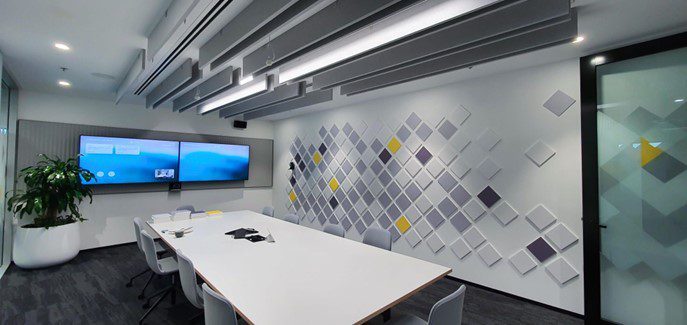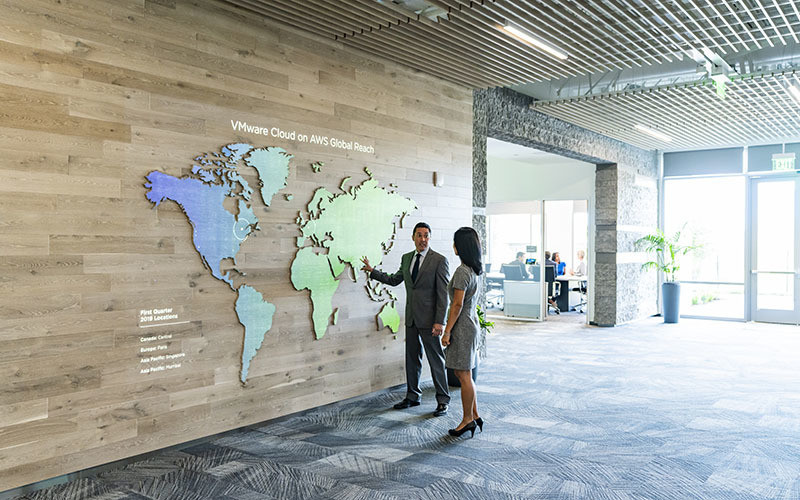
State of the AV Industry – An Australian Perspective
By: David Allara
” As a speaker at a recent industry event, I had the privilege of discussing the current state of the AV industry. In this article, I share some of the key takeaways from the conversations with industry experts representing manufacturing, integration, consulting, and our trade association AVIXA”.
The Post-COVID AV Revolution
Irrespective of an organisation’s work-from-home policy, it has become increasingly evident that AV and communication technology solutions are indispensable in today’s world. A new age of workplace dynamics marked by several prominent themes has emerged in the wake of the COVID-19 pandemic.
One notable change is the expansion of tech-enabled meeting and collaboration spaces within offices. Organisations now recognise the importance of fostering seamless communication, whether employees are in the office or working remotely. These spaces cater to groups of varying sizes as well as remote participants via video conferencing and collaboration technology. A recent shift towards improved inclusivity has transformed the way people can now interact during meetings. Thanks to rapid advancements in AV technology and innovation by industry leading manufacturers, the quality of experience for all meeting participants has taken a remarkable transformation. Remote participants now have the benefit of new tools and features that bridge the geographical gaps to make them feel as if they are right there in the room.
The wide assortment of choice is benefiting organisations of all sizes, enabling them to select AV setups tailored to their unique needs and budgets. Quality AV solutions are no longer exclusive to those with the bigger technology budgets. We also note however, that with the increased availability of AV solution options in the market, it has become crucial for organisations to define the purpose of their AV investments clearly. Understanding the specific needs and goals is the first step to making optimal and informed choices.
Stacy Kempton of Prismatic Group specialises in live entertainment, music, theatre, and events. She notes that these sectors were hit hard during the pandemic. They have taken a while to bounce back and are still not at the levels of 2019 but there is still an upward trend, which is encouraging. Stacy also noticed strong investment during the pandemic in AV systems that were designed for remote online purposes e.g., work from home studios. Post pandemic there is a limited use for these set ups, so she is seeing people looking at ways to repurpose this technology they invested in just a few years ago.
The Rise of Immersive Experiences
We are seeing the demand for “immersive” experiences across various sectors that cover a wide range of applications, including live performances and concerts, captivating retail stores, interactive museum exhibits, or innovative working spaces at the office. Whilst the focus over the past two or three years has been on meeting technology and remote learning, Graham Barrett of HARMAN, a prominent figure in the AV industry in Australia, predicts significant growth in markets that were temporarily paused during the pandemic. These include stadiums, retail centres, performance venues, and other public centres. This resurgence promises exciting opportunities for the AV industry collectively.
As a consultant I have seen an uptick in requests from clients for immersive spaces and experiences in recent months. However, there is often a lack of clarity on the customer side regarding the specific purpose or outcome they seek to achieve. David Labuskes of AVIXA and Tom Squilaciotti of the integration company Concept AV have also been seeing this trend. We therefore agreed it is our collective role to spend extra time with customer stakeholders in the briefing and discovery phase of these types of projects. Taking the time to build small proof of concept systems and/or taking a customer to experience live demonstrations with suppliers can go a long way to developing the right immersive solution. In the AV industry, seeing and hearing is often key to helping customers make the best decisions.
Managing AV Technology Systems and AV as a Service
An increasingly prevalent challenge in the AV industry pertains to software, firmware, and security updates. Manufacturers are regularly releasing improvements to their products such as new features or more secure configuration settings. These are typically released at no extra cost and end customers would be encouraged to take advantage of these benefits. However, it is important to adopt a structured approach to manage these updates. Failing to proactively manage updates to AV systems and devices can lead to negative end-user experiences. Tom Squilaciotti of Concept AV notes that additional time is now required for his company to spend testing and configuring different AV equipment during the implementation phase of projects. They need to make sure all devices have the right version of firmware and are compatible with each other.
Once AV systems are installed, commissioned, and handed over to a customer it is then especially important to have an ongoing plan to keep everything up to date. In my consulting work I always advise customers to have the following key things in place:
-
-
- The AV systems are networked together
-
-
-
- The AV systems can be monitored and managed remotely using software platforms
- Significant manufacturer released updates should be tested in an isolated environment before being rolled out to the wider organisation
-
Organisations that actively manage updates can enjoy the benefits of improved performance and feature sets in their AV systems.
In the workspace sector there is a growing demand for vendors to provide AV systems as a service. This is being driven by larger organisations that are already consuming other business technology in this way. Examples being end user compute devices, office printers, and even coffee machines.
Traditionally, upgrading AV technology in the workspace has required the end customer to have the burden of a large upfront capex investment and the responsibility of ongoing service and maintenance to ensure continual operation. Given these cost barriers, many organisations have had to live with outdated technology for years at a time, which is another downside of this procurement model. AV as a service would enable organisations to free up precious resources and cash flow as well as enjoy the flexibility of keeping their AV technology up to date on a more regular basis.
Manufacturers and service providers have a lot to gain by shifting to the AV as a service model. Owning the AV solutions enables the supplier to see the how, when, and where about usage. Sharing this information with end customers is the key to strategic partnerships over the longer term. Customers are always looking for ways to improve, and data sharing with insightful recommendations is a powerful value add for AV suppliers and advisors.
The Role of Artificial Intelligence (AI) in AV
Artificial Intelligence (AI) has been a buzzword in AV in recent times, but the practical applications are still to be evolved. David Labuskes of AVIXA acknowledges that AI holds promise for the industry’s future, although the specifics remain uncertain. He reminds us of previous trends like 3D, VR, AR, as well as the Metaverse. All of these started with much hype and then fizzled away.
Graham Barrett from HARMAN emphasises that manufacturers are actively integrating various forms of AI into their products and are anxious to learn how users will harness the potential. It is an exciting time as we collectively explore AI’s role in AV.
In my observations I see the effective use of AI in speech and facial recognition tracking cameras. These devices employ advanced AI algorithms to enable automated video capture of people and objects in various settings, including meeting rooms, lecture halls, auditoriums, and even public spaces. Speech recognition technology, with its high-quality audio capture and transcription capabilities, can help ensure every word is captured with precision as well as open the door for automatic translation between languages and voice-activated control of AV equipment.
In conclusion, the post-COVID landscape of the AV industry is brimming with opportunities for businesses willing to embrace change and innovation. As technology continues to evolve, it is essential for organisations to adapt and stay informed about the latest trends and best practices. Whether it is creating immersive experiences, managing AV technology systems effectively, or harnessing the potential of AI, the future looks bright, and I am excited to be a part of it.


